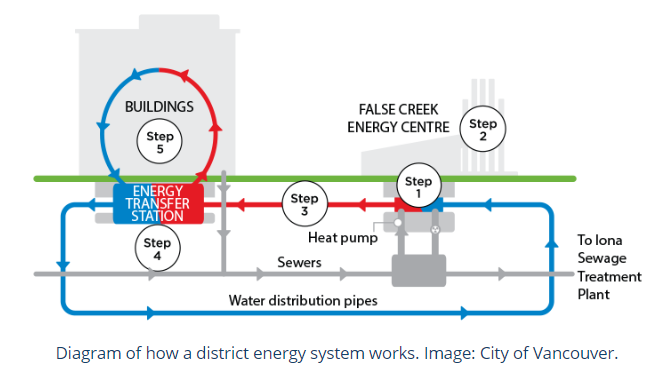Port Coquitlam plans to shave the heating bill for its downtown recreation centre by at least $200,000 a year by tapping into a proposed district energy system down Kingsway Avenue.
Next month, the city will start a feasibility study to see if it can capture the latent heat from big businesses along the corridor and recycle it for the Port Coquitlam Community Centre (PCCC).
Specifically, the municipality will look at how the waste heat from the McLean Avenue pump station, which is currently being upgraded by Metro Vancouver, on Kingsway Avenue can fuel the community hub.
If OK’d, the system would also recover heat from the PCCC’s ice rink chillers.
A report on the study results will come before council later this year with plans to launch the first phase of the green project next year — the same time that the municipality is updating the stretch through the industrial zone.
Kingsway Avenue includes such large businesses as Saputo, Lordco and Lilydale, as well as the North Fraser Pretrial Centre.
Phase 2, if approved, would start in about a decade to develop a bio-energy centre using residual and biogenic waste to provide energy to more than a dozen of the Kingsway businesses.
Joshua Frederick, PoCo’s director of engineering and public works, said the two projects would tie in with the city’s climate action efforts to cut greenhouse gases. His team is also reaching out for partnerships and funding to support the project.
At the Jan. 9 committee-of-council meeting, Frederick pointed the City of Vancouver’s False Creek Neighbourhood Energy Utility, which its currently expanding; it opened during the Winter Olympics year: 2010.
That system recycles latent heat at the False Creek Energy Centre (under the Cambie Street bridge), taking in 70 per cent of its supply from renewal energy sources.
It now supplies low-carbon energy to 6.4 million sq. ft. of mixed-use buildings in the area, including Science World and Emily Carr University of Art + Design.
The infrastructure for that network came from Port Coquitlam via SHARC Energy.
“The recovery is off the charts,” said Coun. Steve Darling, who has spoken to the owners about the False Creek system.
Coun. Nancy McCurrach commended city staff for trying to harness thermal energy like in her native New Zealand.
“It definitely saves money. It’s good for the environment,” she said.
Frederick said by tapping into the heat in the wastewater system at McLean, the city stands to knock off up to 700 tonnes of CO2 out of 3,000 tonnes of corporate emissions.
“I’m confident that if we plan it right and we get the funding in place, we’re going to meet our corporate emissions [targets] quite readily,” he said, noting that Hyde Creek Recreation Centre and city hall are eyed next.
Mayor Brad West said the district energy project “ticks a whole bunch of boxes,” including climate action and economic development in the city.
Located at 2150 Wilson Ave., PCCC includes the Terry Fox Library, three ice arenas, a gym, pool and multi-purpose spaces.
To learn more about Port Coquitlam’s plans for a district energy network along Kingsway Avenue, you can visit the city’s website.





